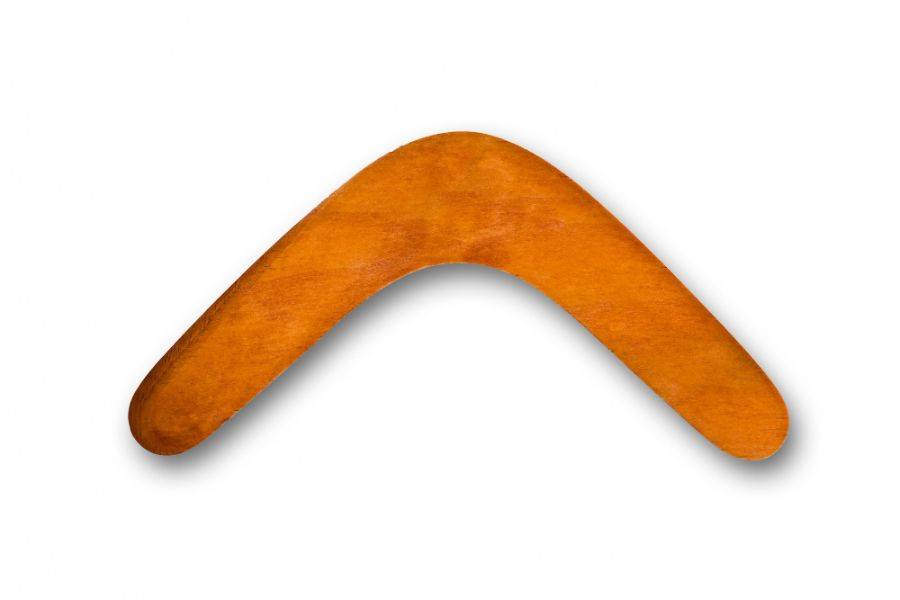Table of Contents
Throwing sticks, also known as rabbit sticks or hunting boomerangs, have been used by indigenous cultures around the world for thousands of years.

They are simple, effective hunting tools that can be used to take down small game.
This article aims to provide a comprehensive guide to hunting with a throwing stick, especially for homesteaders and preppers.
History and Evolution of Throwing Sticks
Throwing sticks are one of the oldest tools known to man, with archaeological evidence suggesting their use dates back to the Stone Age.
They were primarily used for hunting small game, but over time, their usage expanded to include other purposes such as warfare and ceremonial activities.
Over time, throwing sticks evolved into more complex forms like the boomerang.
Despite these advancements, the basic design and function of the throwing stick remained largely unchanged, proving its effectiveness and reliability as a hunting tool.
Understanding the Throwing Stick
Anatomy of a Throwing Stick
A throwing stick typically consists of a straight or slightly curved piece of wood, about the length of the user’s arm.
It is often weighted at one end to increase its momentum when thrown.
The shape, size, and weight of a throwing stick can vary greatly depending on its intended use and the personal preferences of the user.
Types and Variations
There are many types and variations of throwing sticks, ranging from simple straight sticks to complex curved designs.
Some are designed to return to the thrower, like a boomerang, while others are designed to travel in a straight line to hit a target.
Selecting the Right Throwing Stick
Material Considerations
The material of a throwing stick can greatly affect its performance. Hardwoods like oak, hickory, or ash are often preferred for their durability and weight.
However, softer woods like pine or cedar can also be used, especially for beginners who are still learning the basics.
Size and Weight Factors
The size and weight of a throwing stick should match the user’s strength and skill level.
A longer, heavier stick will have more momentum and can hit harder, but it will also be more difficult to throw accurately.
Making Your Own Throwing Stick

The first step in making a throwing stick is gathering the necessary materials. This typically involves finding a suitable piece of wood and shaping it into the desired form.
The crafting process involves carving and shaping the wood, then sanding and finishing it to create a smooth, comfortable grip.
The final step is to balance the stick, ensuring that it flies straight and true when thrown.
Safety Measures in Throwing Stick Hunting
Protective Gear
Safety should be your priority when practicing or hunting. It’s advisable to wear protective gear such as safety glasses.
This can protect your eyes from any debris or accidental rebounds that may occur during the throw.
Environmental Awareness
Being aware of your surroundings is a crucial aspect of hunting safely with a throwing stick. Do not throw your stick if there are other people or animals in the line of fire.
Also, ensure you are not near any fragile or valuable objects that could be damaged.
Understanding Animal Behavior
Understanding the behavior of the animals you are hunting is crucial for your safety.
Animals will instinctively seek cover if they detect a predator, so you need to be prepared for sudden movements that could potentially lead to accidents.
Safe Handling and Storage
When not in use, handle your throwing stick with care, and store it in a safe place. This will ensure it cannot accidentally injure anyone or get damaged.
Safety should always be your priority when hunting, regardless of the tool you are using.
With the right precautions and responsible behavior, hunting with a throwing stick can be a safe and enjoyable activity.
Hunting Strategies with Throwing Sticks
Hunting with throwing sticks calls for a deep understanding of the animal you’re targeting, the environment, and the tool itself.
Here’s a more comprehensive look at different strategies based on these factors:
1. Stealth Approach
This is the most common strategy, particularly effective for small game like rabbits and squirrels. It involves the following steps:
- Stalking: Start by identifying your target and slowly, quietly moving towards it. Make use of natural cover and keep downwind to prevent your scent from reaching the animal.
- Positioning: Position yourself within an optimal throwing distance. This would depend on your comfort level and accuracy with the throwing stick.
- Throwing: Once in position, aim carefully, focusing on your target. Swiftly throw the stick, ensuring your motion is smooth to maintain the stick’s balance and direction.
2. Ambush Strategy
The ambush strategy is ideal when you’re familiar with your prey’s habits. It requires patience and precision:
- Identifying Hotspots: Understand your prey’s movement patterns. Identify frequently used paths, feeding or watering spots where the animal is likely to visit.
- Setting Up: Position yourself near these hotspots but remain hidden and upwind. Camouflage can help blend with the surroundings.
- Waiting and Attacking: Wait for the animal to arrive and get within your throwing range. At the right moment, launch your throwing stick accurately at the target.
3. Group Hunting

Group hunting is a coordinated effort ideal for larger game. It needs teamwork and planning:
- Spreading Out: Hunters should spread out to surround the identified area where the prey is located. Each hunter should be spaced strategically and within sight of each other.
- Driving the Prey: Gradually move inwards, causing the prey to move towards the center of the circle. The aim is to keep the prey within the circle.
- Simultaneous Attack: On a given signal, all hunters throw their sticks at the prey simultaneously. This requires practice to ensure timing and accuracy.
4. Baiting Strategy
Another effective strategy, especially for animals attracted to certain foods or scents:
- Setting Up: Place the bait in a clear, open area where you can maintain a hidden position within throwing distance.
- Waiting and Attacking: Once the animal arrives to investigate the bait, it presents a clear target. Take your time, aim and throw your stick when you have the best shot.
A successful hunting with a throwing stick requires practice and patience.
It’s not just about the throw but understanding the animal’s behavior, adapting to the environment, and making calculated decisions on when and how to strike.
Conclusion
Hunting with a throwing stick is a skill that requires practice and patience, but it can be a valuable addition to any homesteader’s or prepper’s toolkit.
Whether for food acquisition, self-defense, or simply as a hobby, throwing stick hunting offers a connection to our ancient past and a practical, sustainable way of interacting with the natural world.

![How To Build A Four-Season Room On A Deck [Guide] How To Build A Four-Season Room On A Deck [Guide]](https://homesteadandprepper.com/wp-content/uploads/2021/04/How-to-build-a-four-season-room-on-a-deck-150x150.jpg)


![How To Fix Gap Between Door And Floor [Guide] How To Fix Gap Between Door And Floor [Guide]](https://homesteadandprepper.com/wp-content/uploads/2021/09/How-to-Fix-Gap-between-Door-and-Floor-150x150.jpg)

![Screws or Nails for Framing - Which Should I Use? [Guide] Screws or Nails for Framing - Which Should I Use? [Guide]](https://homesteadandprepper.com/wp-content/uploads/2021/10/Nails-or-screws-for-framing-150x150.jpg)
![Replacing Saddle Valve With Sharkbite [Full Guide] Replacing Saddle Valve With Sharkbite [Full Guide]](https://homesteadandprepper.com/wp-content/uploads/2021/10/Replacing-Saddle-Valve-With-Sharkbite-150x150.jpg)
